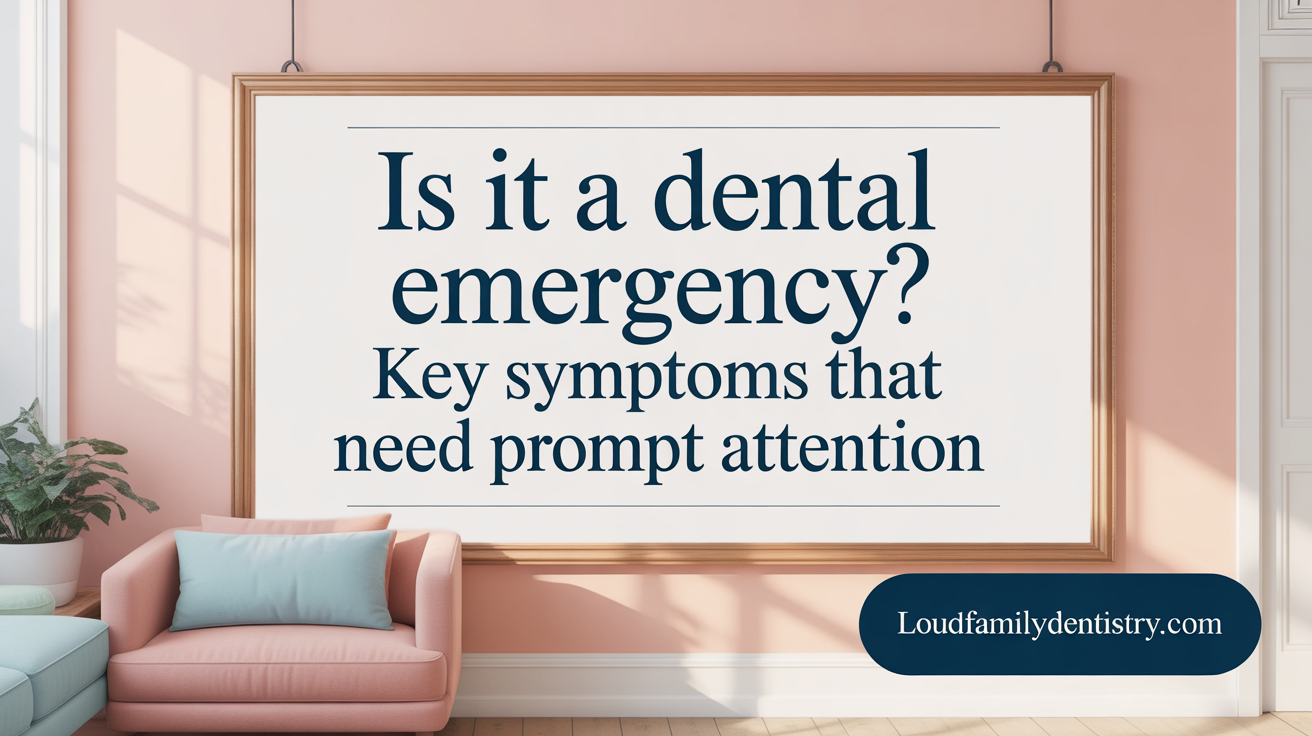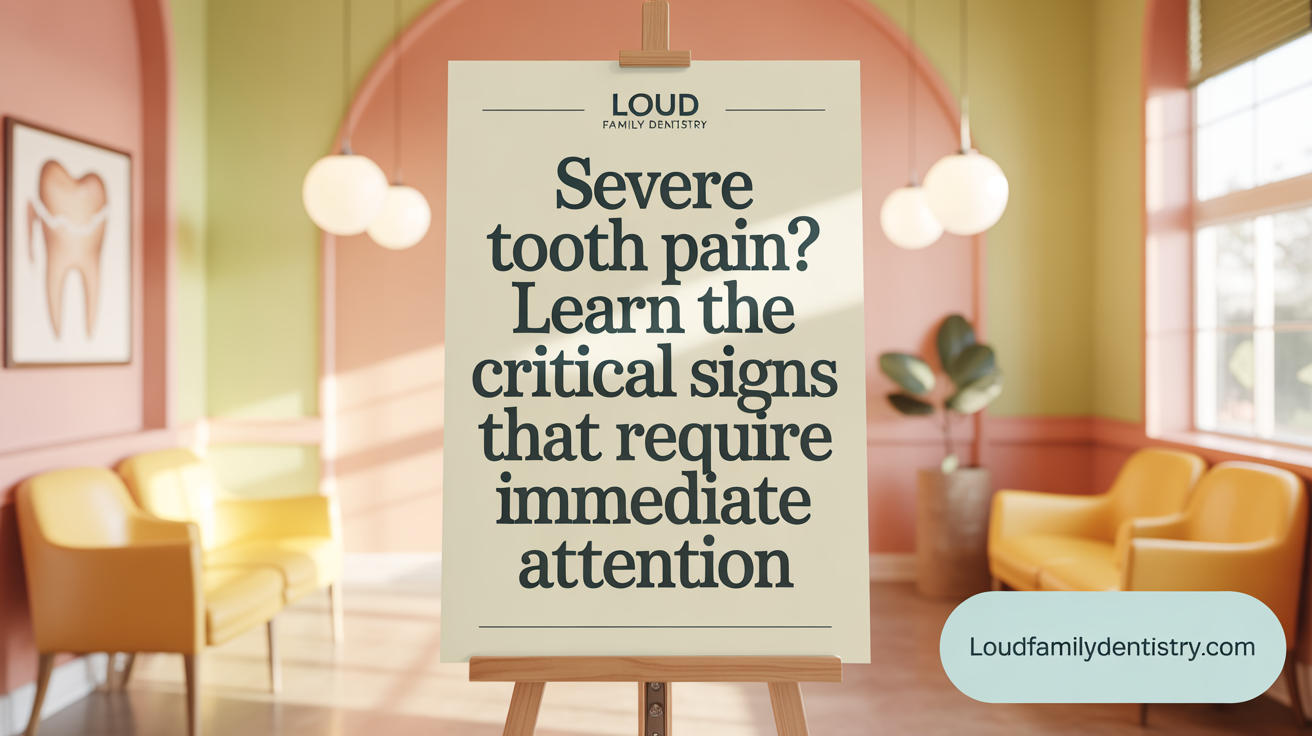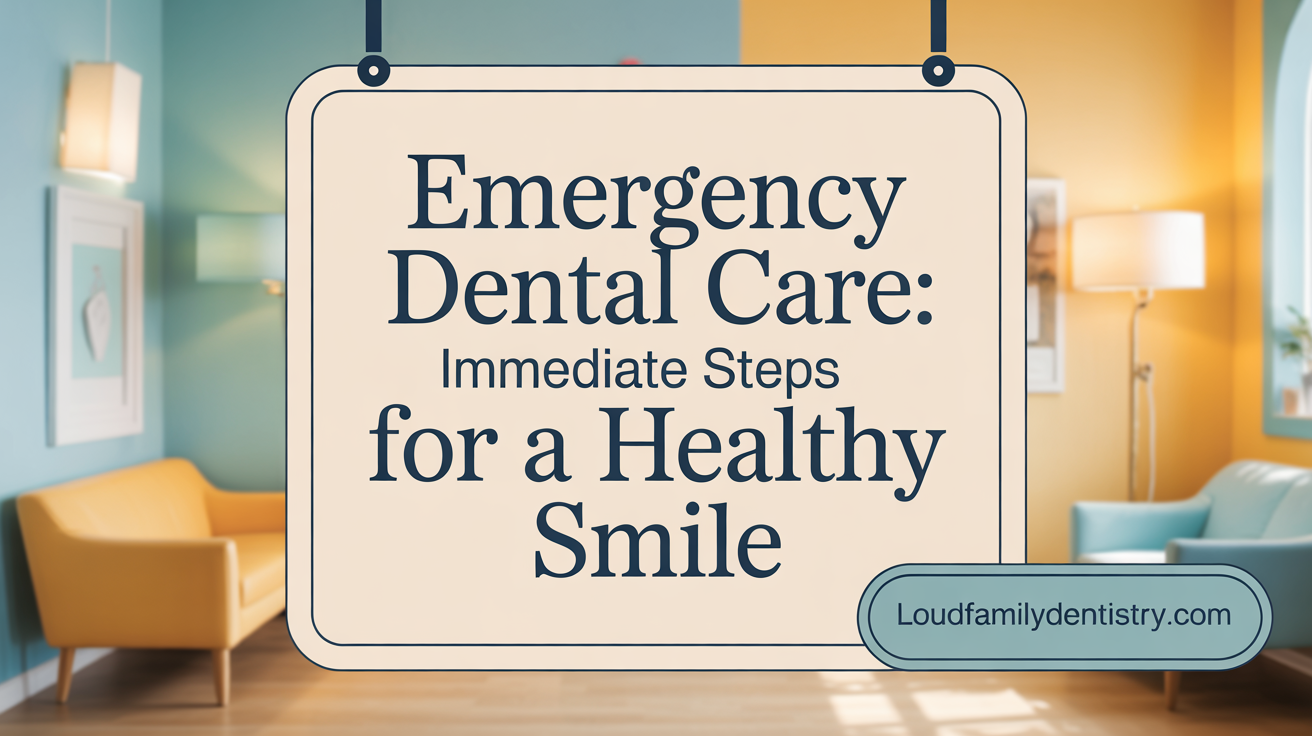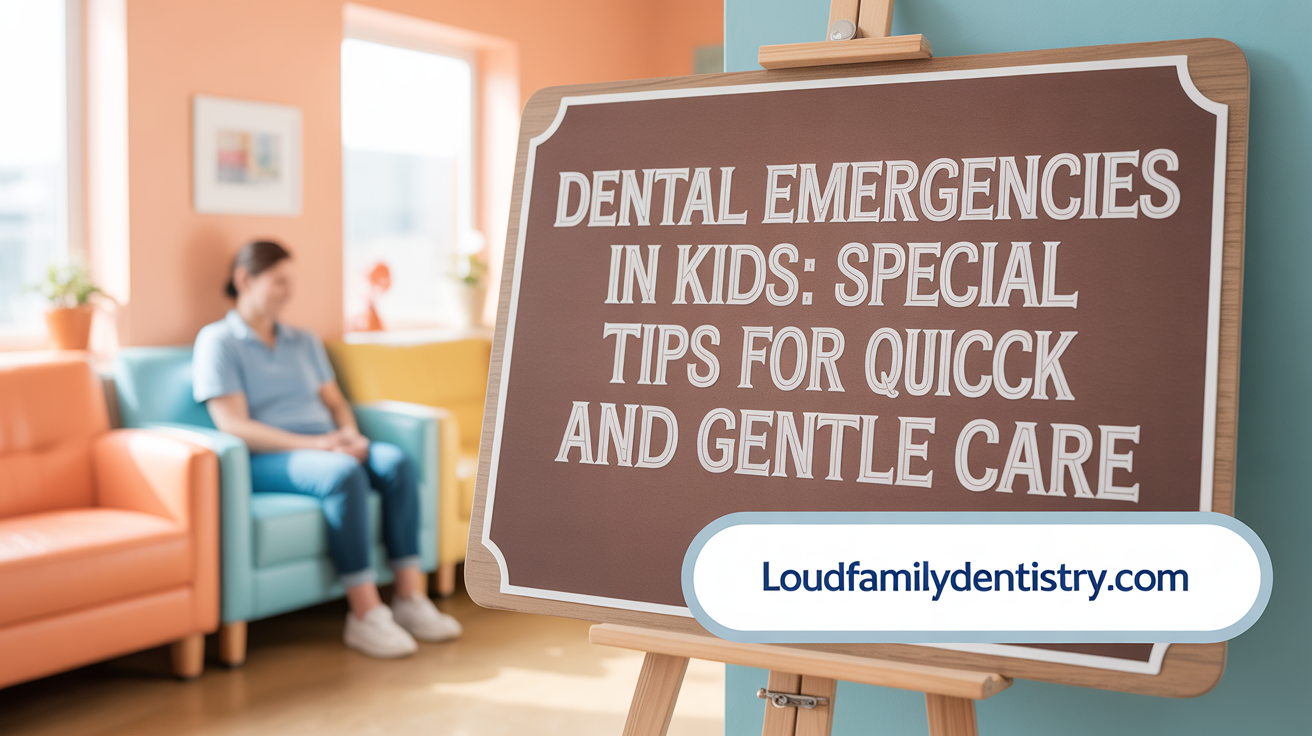Understanding Dental Emergencies: Why Immediate Attention Matters
Dental emergencies can be distressing and confusing, especially when you're unsure whether the issue requires immediate care or can wait for a routine dental visit. Knowing how to recognize a true dental emergency is vital to protecting your oral health, alleviating pain, and preventing complications such as infections or permanent tooth loss. This article breaks down the critical signs, symptoms, and actions needed when faced with urgent dental problems, including special considerations for children.
Defining a True Dental Emergency: Recognizing Urgent Signs and Symptoms

What is a dental emergency?
A dental emergency is any oral health issue that demands immediate professional attention. It typically involves severe pain, uncontrolled bleeding, or the need to save a tooth or prevent serious infection. The American Dental Association (ADA) specifies conditions like traumatic injuries, severe infections, and bleeding as true emergencies.
Key symptoms of real dental emergencies
Recognizing the symptoms is crucial. Signs include persistent, severe tooth pain that doesn't go away, uncontrollable bleeding from the mouth, a knocked-out or dislodged tooth, facial swelling, broken or fractured teeth causing pain, and soft tissue injuries that result in heavy bleeding. Also, symptoms like swelling with fever, difficulty swallowing or breathing, and a bad taste or pus in the mouth indicate urgent medical needs.
Life-threatening dental conditions
Infections like abscesses can become life-threatening, especially if they cause large facial swelling, fever, or difficulty swallowing. Trauma affecting the airway, such as severe jaw fractures or deep soft tissue cuts causing airway obstruction, require immediate emergency room care. Uncontrolled bleeding after injury also constitutes a true emergency.
Examples of urgent dental problems
Common urgent issues include knocked-out permanent teeth, severe or persistent toothaches, cracked teeth with pain or exposed nerves, dislodged fillings or crowns that cause discomfort, soft tissue injuries with bleeding, and facial swelling linked to infection. Injuries involving the lips, tongue, or cheeks that bleed heavily also require prompt attention.
How do you know if you have a dental emergency?
You know you have a dental emergency if you experience severe or ongoing pain, bleeding that refuses to stop, or a broken, cracked, or knocked-out tooth. Swelling of the face, significant injuries to soft tissues, or symptoms of systemic infection like fever and bad taste are additional signs. Trauma, uncontrollable bleeding, or signs that threaten your airway or overall health signal the need for urgent care.
Prompt action by contacting your dentist immediately or visiting an emergency room can prevent further damage and save your teeth. Recognizing these signs ensures that you seek help quickly when it matters most.
Identifying Emergency Tooth Pain and Related Indicators

How can you tell if tooth pain is a dental emergency?
Recognizing when tooth pain is an emergency is crucial for preventing serious complications. Severe, persistent pain that does not subside with over-the-counter medication often signals a deeper problem such as an infected pulp, abscess, or a fractured tooth with exposed nerves.
In addition to pain severity, accompanying signs serve as warning indicators. Swelling, redness, or warmth around the affected area suggests an ongoing infection needing urgent care. If the pain is sharp when biting or chewing, or if a part of the tooth seems loose or has been knocked out temporarily, immediate treatment is necessary.
Visible symptoms like pus or bleeding also point toward infection or trauma. Pus, in particular, indicates an abscess that can rapidly spread if untreated.
Systemic signs such as fever, chills, swollen lymph nodes, or general malaise further reinforce the need for urgent dental attention. These symptoms show the infection might be affecting more than just the local area.
Understanding the link between pain and potential underlying issues helps in assessing urgency. Persistent pain combined with swelling, systemic symptoms, or visible nerve exposure typically requires prompt professional evaluation. Acting swiftly can prevent the spread of infection, preserve the tooth, and alleviate severe pain.
Signs like exposed nerves, loose or knocked-out teeth
Exposed nerves can be identified when a tooth's core becomes visible through a crack or fracture, often resulting in intense sensitivity to hot, cold, or sweet stimuli. This often indicates that the pulp has been compromised, making it a dental emergency.
Loose teeth or those knocked out due to trauma significantly disrupt oral stability and function. A tooth knocked out should ideally be reinserted promptly—within 30 minutes to an hour—for the best chance of saving it.
Signs of a traumatic injury, such as a displaced or intruded tooth pushed deep into the gum, also indicate immediate need for dental care. Prompt action, including handling the tooth correctly and seeking urgent treatment, is essential.
How tooth pain correlates with underlying serious issues
Tooth pain is often a symptom of underlying health problems. Severe pain might be caused by deep decay reaching the nerve, fractures exposing sensitive tissue, or infections forming abscesses. These conditions may not only threaten the tooth but can also lead to systemic health issues if untreated.
Infections from dental origin can cause facial swelling, fever, and even difficulty swallowing or breathing when left untreated. These serious signs mark a dental emergency and should be addressed immediately.
In summary, understanding the characteristics of emergency-level tooth pain—especially its intensity, duration, and associated symptoms—is vital for timely intervention. Recognizing signs such as nerve exposure, loose or knocked-out teeth, swelling, and systemic symptoms helps determine when urgent dental care is necessary, preventing more extensive damage and enhancing treatment outcomes.
Key Signs Signaling the Need for Immediate Dental Treatment

What are the key signs indicating the need for urgent dental treatment?
Recognizing the symptoms that require immediate care can prevent further damage and improve outcomes. Severe, persistent toothache is often caused by infections, deep cavities, or cracked teeth and may indicate an abscess or nerve injury needing urgent attention.
Traumatic injuries such as knocked-out or broken teeth are emergencies, especially when accompanied by bleeding, swelling, or facial damage. A knocked-out tooth should be handled gently, kept moist, and replanted quickly if possible.
Swelling around the mouth, jaw, or face, especially if paired with fever, foul taste, or difficulty swallowing, signals a serious infection or abscess that needs immediate treatment to prevent spreading.
Other red flags include uncontrolled bleeding after trauma or dental procedures, loose or lost fillings or crowns exposing sensitive areas, and numbness in the affected area indicating nerve damage.
Signs like difficulty biting, misaligned teeth after injury, or pain that refuses to subside even after taking painkillers are also concerning. If any of these symptoms occur, contacting a dental professional promptly is crucial.
Recognizing these warning signs ensures urgent care can be sought to preserve oral health and avoid more complicated procedures later.
Responding Effectively to Dental Emergencies: Immediate Actions and Professional Care

Step-by-step emergency management
In any dental emergency, the first step is assessing the situation calmly. Determine if the problem involves severe pain, bleeding, swelling, or a broken or knocked-out tooth. For bleeding, apply firm pressure on the bleeding site with gauze or a clean cloth until bleeding stops. If there's swelling, applying a cold compress to the affected area can help reduce inflammation. If the pain is severe and persistent, over-the-counter analgesics can be taken while waiting for professional treatment. Remember, maintaining oral hygiene and protecting the injured area helps prevent further damage.
Handling knocked-out teeth and fractures
Knocked-out teeth require quick action. Rinse the tooth gently with milk or saline, holding it by the crown (top), avoiding touching the root. If possible, reinsert the tooth into its socket and bite down gently to hold it in place. If re-insertion isn't possible, store the tooth in milk or saline, and see a dentist within 30 minutes to an hour for the best chance of saving the tooth. For cracked or fractured teeth, collect any broken fragments, rinse the mouth with warm water, and apply a cold compress to minimize swelling. A dental professional can evaluate if a root canal or crown is necessary.
Managing bleeding and swelling
Uncontrolled bleeding often indicates a true emergency, especially if it persists beyond 15-20 minutes of applying pressure. Emergency care may involve additional measures such as packing the wound, applying hemostatic agents, or seeking immediate hospital treatment. Swelling, particularly when accompanied by pain, fever, or difficulty swallowing, suggests a serious infection like an abscess. Rinsing with warm salt water can help temporarily, but urgent dental intervention is essential to prevent the infection from spreading.
When to visit the emergency room versus the dentist
For life-threatening situations like uncontrolled bleeding, facial trauma affecting breathing, broken jaws, or severe infections with swelling and fever, head to the emergency room or call 911 immediately. Less severe issues—such as minor chips, lost fillings, or mild sensitivity—are best scheduled for a regular dental appointment. If you're unsure about the severity of a situation, consult your dental provider for guidance. Prompt action in true emergencies can greatly improve outcomes, saving teeth and preventing complications.
Preventive measures to reduce emergencies
Prevention is vital to avoid many dental crises. Always wear mouthguards during sports, use prescribed night guards if recommended, and avoid hard foods that can crack teeth. Maintaining regular dental checkups allows early detection of issues before they escalate. Using proper techniques—like not using teeth as tools or biting on ice—reduces the risk of fractures and other injuries. Good oral hygiene practices also diminish the chance of infections and abscesses.
Summary Table of Emergency Management Steps
| Situation | Immediate Action | Follow-up | Additional Tips |
|---|---|---|---|
| Knocked-out tooth | Rinse, reinsert, or store in milk, see dentist ASAP | Replant within 30-60 mins | Handle by crown, avoid root contact |
| Cracked or fractured tooth | Collect fragments, rinse mouth, cold compress | Dental review and possible treatment | Seek prompt care to prevent infection |
| Uncontrollable bleeding | Apply pressure, seek emergency care | Stabilize bleeding area | Use gauze or cloth for bleeding control |
| Severe swelling or infection | Warm salt water rinse, seek urgent dental care | Antibiotics or drainage | Signs include fever, facial swelling |
| Soft tissue injuries | Stop bleeding with pressure, clean wound | Medical or dental attention | Watch for signs of infection |
Recognizing the difference between emergencies and minor issues helps ensure proper responses and preserves oral health. Immediate professional attention, combined with swift and calm actions, can prevent long-term damage and improve recovery chances.
Special Considerations for Dental Emergencies in Children

What special considerations should be taken for dental emergencies in children?
Handling dental emergencies in children requires understanding that they may find it challenging to communicate their pain or describe what happened. This makes careful observation and a gentle approach critical during assessment.
For instance, if a child has a knocked-out adult tooth, immediate reimplantation within 30 minutes provides the best chance of saving the tooth. In cases of soft tissue injuries, such as a bitten lip or tongue that’s bleeding heavily, applying gentle pressure with gauze and seeking urgent care is essential.
Managing a fractured jaw or a broken tooth in a child involves stabilization and quick medical evaluation to prevent further injury.
Medications used for pain relief should be age-appropriate, with proper dosing—never exceeding recommended amounts. Employing calming techniques like distraction, reassurance, or even relaxation strategies can help ease anxiety.
Prevention plays a vital role in pediatric emergencies. Ensuring children wear mouthguards during sports and maintaining good oral hygiene reduces the likelihood of serious injuries.
Special needs children may require tailored approaches, including more careful handling or additional support to calm them.
By acting quickly, staying gentle, and seeking professional care promptly, caregivers can minimize long-term damage and help children feel safe and cared for during such stressful situations.
Taking Action: Protecting Your Smile Through Timely Dental Care
Understanding how to recognize a true dental emergency empowers you to seek timely and appropriate care, which can save teeth, prevent infections, and reduce pain. Not every dental issue requires emergency room visits; knowing when to contact your dentist and when to seek immediate medical help is crucial. By observing symptoms such as severe pain, uncontrollable bleeding, swelling, or trauma involving the teeth and mouth, you can act decisively. Preventive measures like wearing mouthguards during sports and maintaining regular dental visits decrease the likelihood of emergencies. When an emergency arises, rapid and effective response—including proper handling of injuries and prompt professional intervention—ensures the best possible outcomes for your oral and overall health.
References
- What Constitutes a True Dental Emergency?
- What Is or Isn't a Dental Emergency Greensboro NC, Edwin L. Booth ...
- What Counts as a True Dental Emergency? | Crown Point, IN
- 6 Signs of a Dental Emergency - Modern Age Dentistry
- Is It a True Dental Emergency or Can I Wait? | Alvin, TX
- What Is a True Dental Emergency? - Afton Dental in Concord, NC
- Common Dental Emergencies and How to Handle Them
- Do You Know What a True Dental Emergency Is? - Braven Health
- When to Go to the ER vs. a Dentist in Birmingham, AL
- Common Signs That Require Immediate Dental Care
